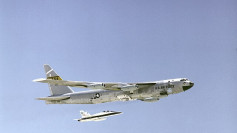Iran has begun construction at its Natanz nuclear facility, satellite images released Wednesday show, just as the United Nations' nuclear agency said Iran was building an underground advanced centrifuge assembly plant after its last one exploded in a "sabotage" attack last summer.
Inspectors of the UN International Atomic Energy Agency confirmed Iran had started building the new facility at the site of its Natanz nuclear plant facility 250 kilometers south of Tehran. Natanz already has several underground facilities protected against Israeli airstrikes by 25 feet of reinforced concrete.
Ali Akbar Salehi, head of the Atomic Energy Organization of Iran, said in September the destroyed above-ground facility was being replaced with one "in the heart of the mountains around Natanz."
Satellite images of Natanz analyzed by experts don't yet reveal signs of excavation, however.
"They have started, but it's not completed," said IAEA director-general Rafael Grossi. "It's a long process." Grossi refused to reveal more details about the new complex, saying it is "confidential information."
Iran was forced to transfer its centrifuge assembly underground after Israel and the U.S. sabotaged its above-ground plant in July in a successful Stuxnet malware cyberattack. The intrusion resulted in a massive explosion that delayed Iran's enriched uranium production by some two months.
Sources quoted by Arabian news media said the Israel attack July 2 was in retaliation for alleged attempts by Iran to hack into Israel's water infrastructure in April. The attack was thwarted by Israel cybersecurity experts.
Iran officials said the Natanz fire and explosion July 2 was likely caused by a cyberattack. One of the officials said Israel and the U.S. had carried out a similar and equally devastating attack on Natanz in the past.
The November 2009 to January 2010 cyberattacks on Natanz revealed to the world the existence of Stuxnet, a malicious computer worm developed by the Americans. The joint Israeli-U.S. operation destroyed almost one-fifth of Iran's nuclear centrifuges.
The attack hit supervisory control and data acquisition systems, infected more than 200,000 Iranian computers and caused physical damage to more than 1,000 centrifuges.
In a December 2010 report, the Institute for Science and International Security said Stuxnet is a reasonable explanation for the damage inflicted at Natanz.
Stuxnet was specifically designed to destroy centrifuges at Natanz.






